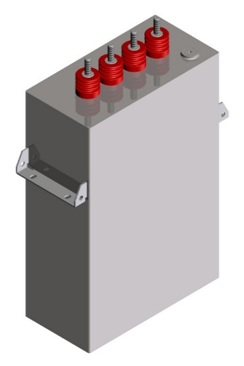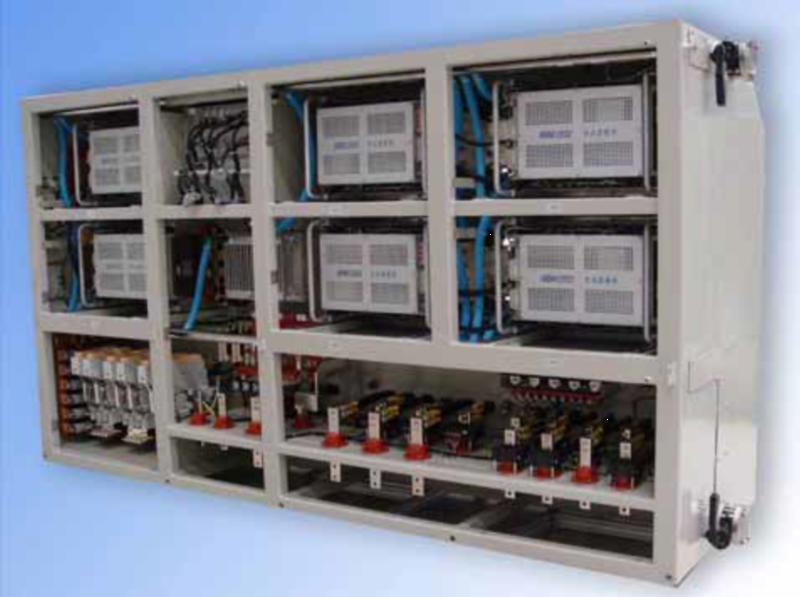Summary
As a key component in power electronic systems, DC link film capacitors have the main function of providing stable voltage support and efficient ripple current absorption for the DC bus. This paper will deeply analyze the technical principles of DC support capacitors in actual work, including its basic structure and working principle, ripple current absorbing mechanism, equivalent parameter characteristics, thermal management design, square shell packaging technology characteristics, and system integration applications. It also focuses on the impact of the equivalent inductance and equivalent internal resistance of DC link capacitors on system performance, and combines the structural advantages of square shell DC link capacitors to fully reveal its key technical principles in modern power electronic devices.

- Basic structure and working principle of DC support film capacitors
The core function of DC link capacitors is to provide stable DC voltage support for power electronic systems. Film capacitors use metallized polypropylene film as the dielectric material and form capacitor element through precision winding technology, which has excellent electrical performance and long-term stability. The working principle of DC link capacitors is based on the basic physical mechanism of charge storage and release. When the system load changes, it can respond quickly and provide or absorb transient current to maintain bus voltage stability. The equivalent inductance and equivalent internal resistance of the DC link capacitor are key parameters that affect its high-frequency performance and need to be minimized through structural optimization. The square shell DC link capacitor adopts a compact metal shell design, which not only improves the mechanical strength but also optimizes the heat dissipation path. In practical applications, the DC link capacitor needs to withstand the pulse current generated by high-frequency switching devices, which requires it to have extremely low losses and excellent self-healing characteristics. The performance of the DC link capacitor directly determines the reliability and efficiency of the entire power electronic system.
- Ripple current absorbing mechanism and thermal characteristics of DC linkcapacitors
The DC link capacitor must have the ability to efficiently absorb high-frequency ripple current, which is one of its core functions. In the operation of the inverter or converter, the switching action of the power device will generate a large of high-frequency ripple current. The DC link capacitor absorbs this current through a low-impedance path to prevent it from interfering with the system. The ESL of the DC link capacitor determines its high-frequency response capability, while the equivalent internal resistance directly affects the temperature rise under the ripple current. With its large-area electrode design and optimized internal structure, the square shell DC link capacitor can achieve a more even current distribution, thereby reducing the risk of local hot spots. Thermal management of DC support capacitors is the key to design, and multiple heat sources such as dielectric loss, electrode resistance loss, and contact resistance of connectors need to be considered. In actual work, DC link capacitors need to continuously withstand the heat generated by ripple current, which requires that their internal temperature always remain within a safe range. The life of DC link capacitors is closely related to the operating temperature, and reasonable thermal design can significantly extend their service life.
- ESLof DC linkcapacitors and their impact on system performance
The ESL and ESR of DC link capacitors are key indicators that determine their dynamic performance. In high-speed switching applications, the ESL of DC support capacitors will form a resonant circuit with the capacitor, which may cause voltage oscillation and electromagnetic interference problems. The ESR of DC link capacitor directly affects the energy conversion efficiency of the system. Excessive ESR will cause significant power loss and temperature rise. Square shell DC link capacitors can effectively reduce the adverse effects of equivalent parameters by optimizing the internal structure and adopting low-inductance terminal design. The high-frequency impedance characteristics of the DC link capacitor need to be precisely matched with the system requirements, which requires engineers to have a deep understanding of its equivalent circuit model. In practical applications, the equivalent parameters of DC link capacitors will change with temperature, frequency and aging, and these factors need to be fully considered in the design stage. The performance optimization of DC link capacitors is a multi-objective balancing process, which requires finding the best balance between capacitance value,voltage, ESL, ESR and cost.
- Thermal management and reliability design of DC linkcapacitors
The thermal design of DC support capacitors directly affects their working reliability and service life. In high temperature environments, the dielectric material of DC link capacitors will accelerate aging, and the ESR will also increase with increasing temperature, forming a vicious circle. The ESL of DC support capacitors not only affects electrical performance, but also indirectly affects heat distribution, because high-frequency currents will be concentrated on the electrode surface due to the skin effect. Square shell DC link capacitors use metal shells as heat dissipation, and by optimizing the selection of thermal interface materials, the overall heat dissipation effect can be significantly improved. The thermal management of DC link capacitors needs to be comprehensively considered from multiple aspects such as material selection, structural design, and installation methods. In the actual system layout, the installation location of the DC link capacitor should avoid other heat sources and ensure good air convection conditions. The life prediction model of DC link capacitors needs to comprehensively consider the combined effects of electrical stress and thermal stress
5. Structural advantages and application characteristics of square shell DC support capacitors
Square shell DC link capacitors have shown significant advantages in many applications due to their unique packaging form. Compared with traditional cylindrical designs, square shell DC support capacitors have higher space utilization, which is convenient for large-capacity layout in limited space. The ESL of DC link capacitors can be further reduced in square shell structures through special leading terminal design, which is particularly important for high-frequency applications. The metal shell of the square shell DC link capacitor not only provides electromagnetic shielding, but also serves as mechanical support and heat dissipation channel, improving overall reliability. The ESR of the DC link capacitor can be effectively reduced in the square shell design by optimizing the internal connection method, thereby reducing energy loss during operation. In practical applications, square shell DC link capacitors are easier to implement modular design, which is convenient for system integration and maintenance. The square shell packaging of DC link capacitors also provides more flexibility for installation and fixation, adapting to different mechanical environment requirements.

6. Integration and application of DC linkcapacitors in power electronic systems
As a key component of power electronic systems, the integration method of DC support capacitors directly affects the overall performance. In modern frequency converters and inverters, DC support capacitors need to work closely with power modules, busbars and other components to form a low-inductance loop. The ESL of the DC link capacitor will be superimposed with the system stray inductance, which may cause dangerous overvoltage and must be minimized through careful design. Due to its regular structure, the square shell DC link capacitor is easier to achieve compact integration with the IGBT module and reduce the loop area. The ESR of the DC link capacitor cannot be ignored in the calculation of system efficiency, especially in high power density applications. In actual engineering, the selection of DC link capacitors needs to comprehensively consider multiple factors such as voltage level, capacity requirements, ripple current, and environmental conditions. The future development trend of DC link capacitors is higher power density, lower equivalent parameters and longer service life to meet the increasingly improved performance requirements of power electronic equipment.